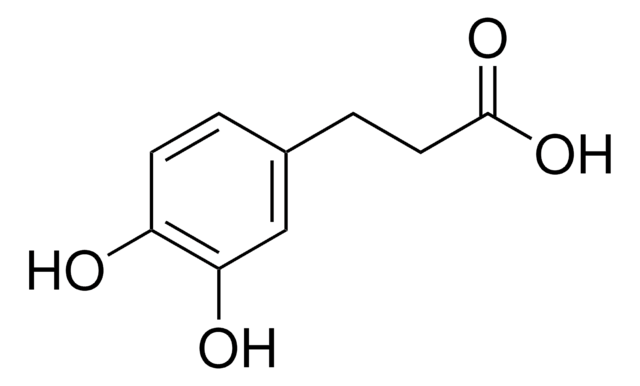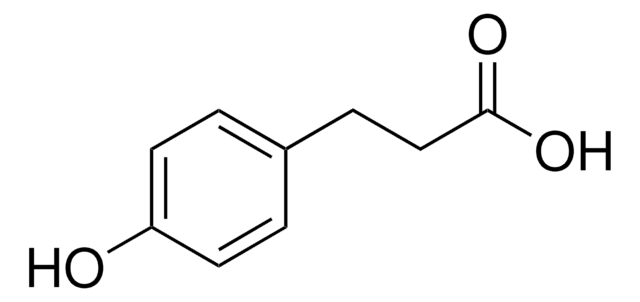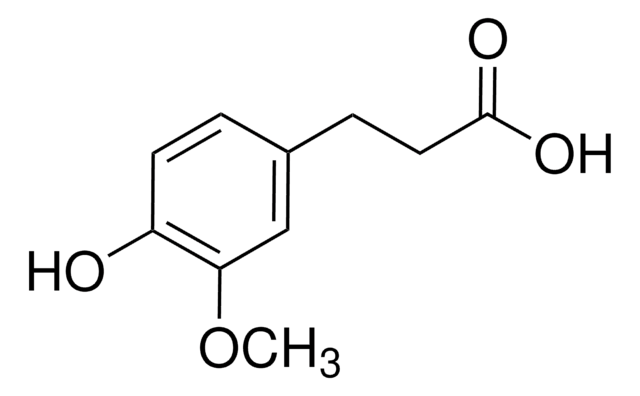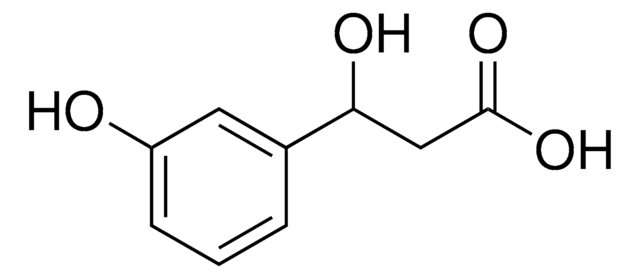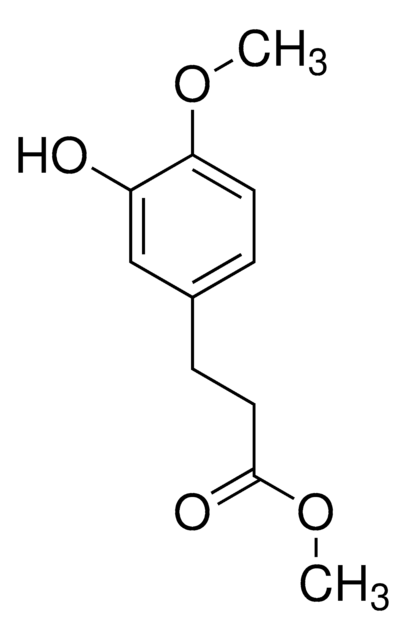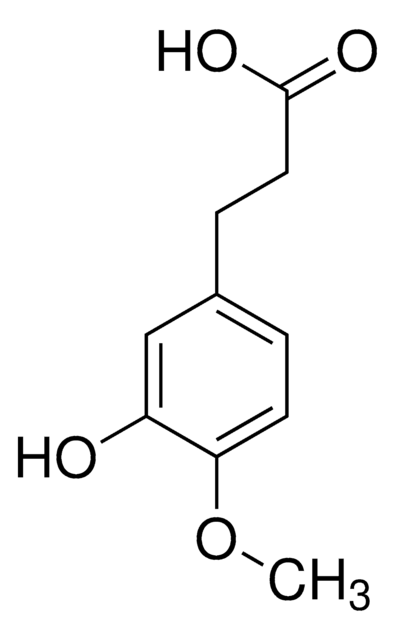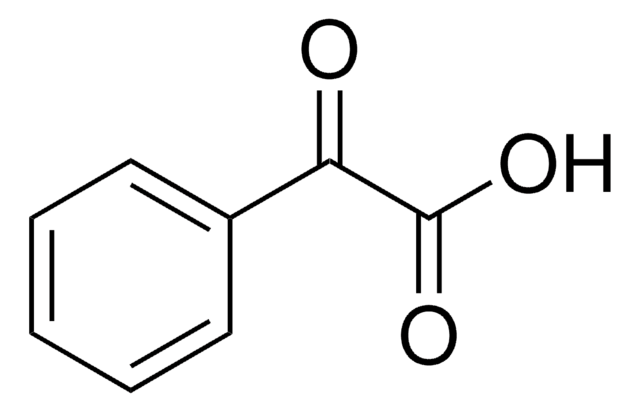37870
3-(2,4-Dihydroxyphenyl)propionic acid
≥95.0% (HPLC)
Sinonimo/i:
2,4-Dihydroxyhydrocinnamic acid, Hydroumbellic acid
About This Item
Prodotti consigliati
Saggio
≥95.0% (HPLC)
Forma fisica
solid
Punto di fusione
158-162 °C
Stringa SMILE
OC(=O)CCc1ccc(O)cc1O
InChI
1S/C9H10O4/c10-7-3-1-6(8(11)5-7)2-4-9(12)13/h1,3,5,10-11H,2,4H2,(H,12,13)
HMCMTJPPXSGYJY-UHFFFAOYSA-N
Descrizione generale
Applicazioni
Codice della classe di stoccaggio
11 - Combustible Solids
Classe di pericolosità dell'acqua (WGK)
WGK 3
Punto d’infiammabilità (°F)
Not applicable
Punto d’infiammabilità (°C)
Not applicable
Dispositivi di protezione individuale
Eyeshields, Gloves, type N95 (US)
Certificati d'analisi (COA)
Cerca il Certificati d'analisi (COA) digitando il numero di lotto/batch corrispondente. I numeri di lotto o di batch sono stampati sull'etichetta dei prodotti dopo la parola ‘Lotto’ o ‘Batch’.
Possiedi già questo prodotto?
I documenti relativi ai prodotti acquistati recentemente sono disponibili nell’Archivio dei documenti.
Il team dei nostri ricercatori vanta grande esperienza in tutte le aree della ricerca quali Life Science, scienza dei materiali, sintesi chimica, cromatografia, discipline analitiche, ecc..
Contatta l'Assistenza Tecnica.
